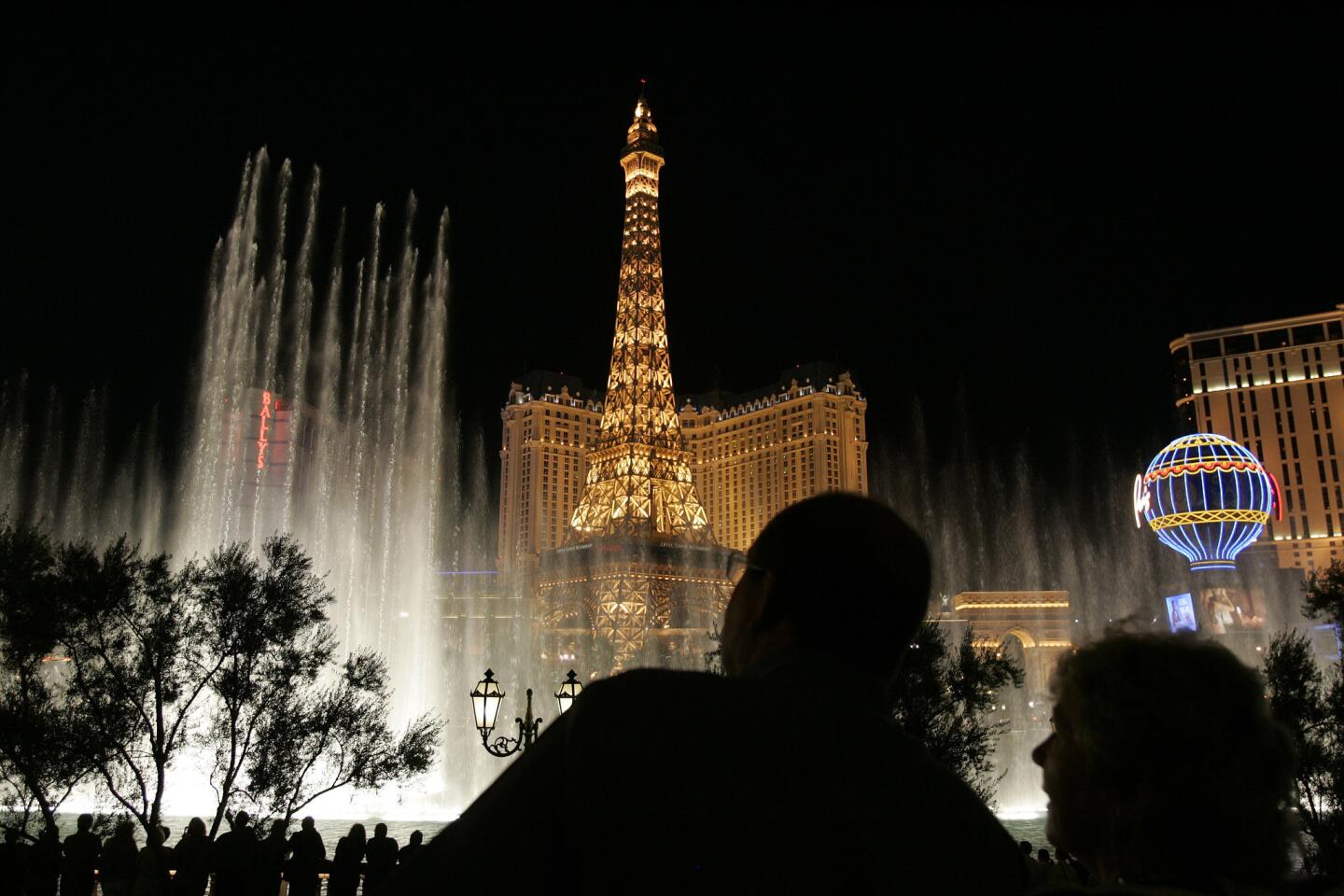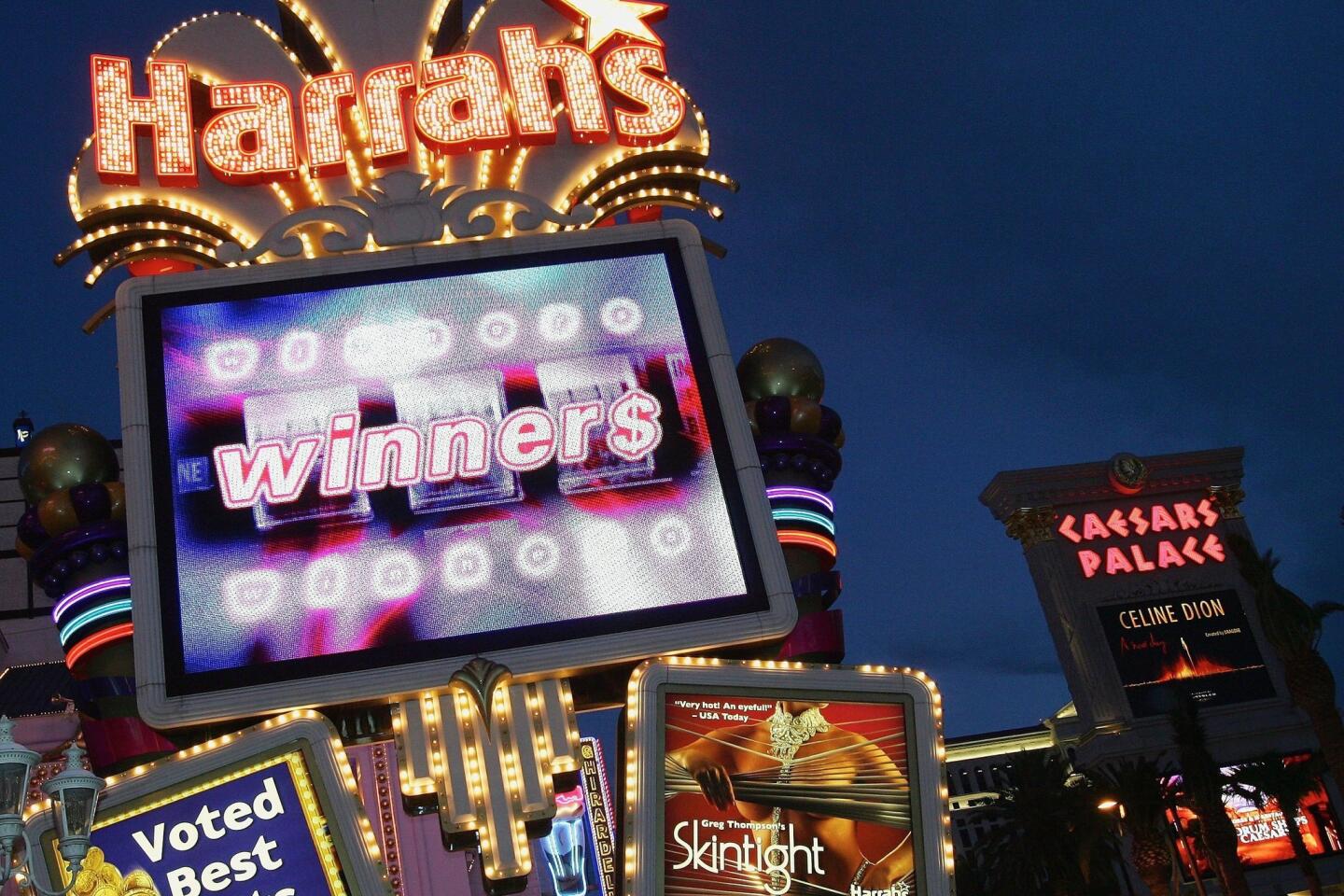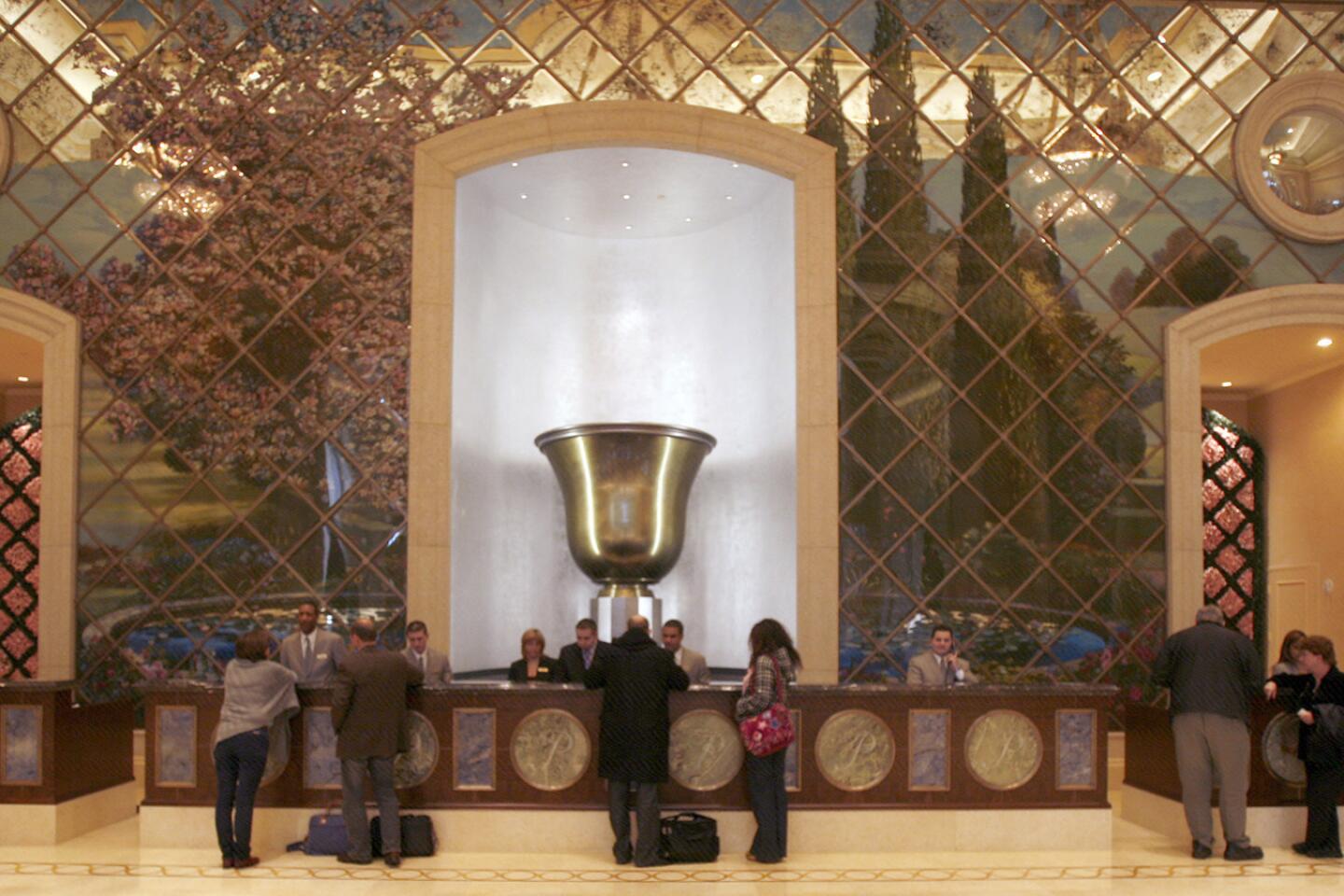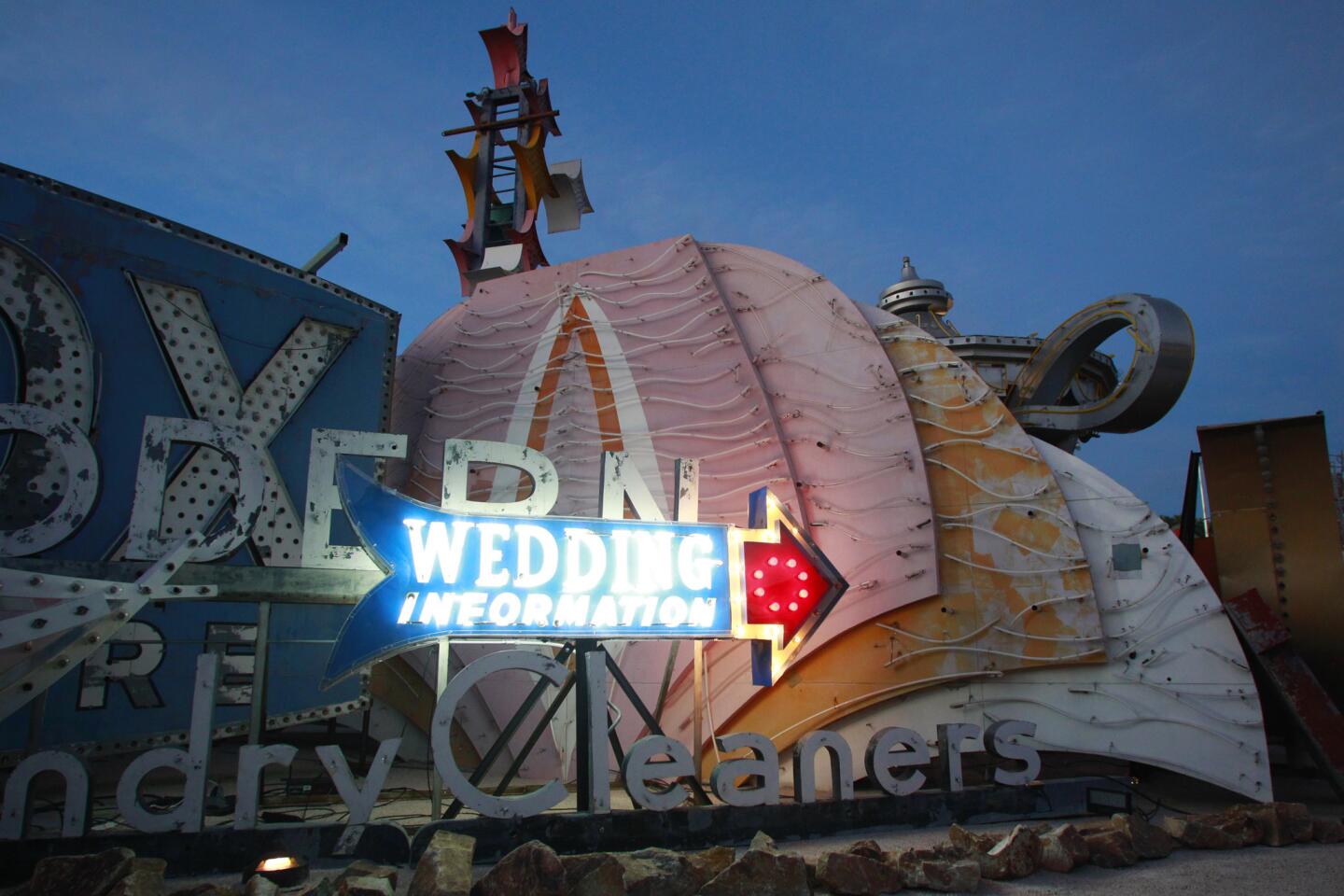Las Vegas train: Will it ever happen?
- Share via
Reporting from Las Vegas — Terry Mullery and his wife, Lisa, of Burbank, love an occasional weekend in Las Vegas. It’s the boring and often-arduous drive on Interstate 15 they hate.
“We get up around 3 o’clock in the morning [on Friday] and are on the road by 4 … just to beat the traffic,” he said. “And coming home [on Sunday], it’s even worse unless you take an extra day off. No matter what, we get caught in horrific traffic.
FOR THE RECORD:
Las Vegas train: A June 20 Travel article about the future of rail travel between Las Vegas and Southern California included an assertion from Richann Bender, head of the group lobbying for a maglev train, that a competitor’s proposed terminus in Victorville was just past the halfway point between Vegas and metropolitan L.A. Victorville is 85 miles from Los Angeles and 185 miles from Las Vegas. —
“You think, ‘This is insane. Why don’t they put tracks down and have trains on it?’ ” he asks.
Passenger trains haven’t passed through Las Vegas since 1997, when Amtrak halted its Desert Wind service between L.A. and Salt Lake City. There’s been plenty of talk about reviving the line, but until recently, little movement.
Now people are crawling out from beneath wooden ties, pitching plans on how best to move people between Southern California and Sin City. It’s one of the many intercity corridors where battles are being fought to secure federal or private funding, or both.
When it comes to the California- Nevada line, even the experts have lost count of how many proposals there are.
“There are quite a few,” said Pushkin Kachroo, director of the Transportation Research Center at the University of Nevada, Las Vegas. “There are different companies that are proposing different solutions.”
Kachroo says the concepts include conventional diesel-powered trains, one using solar energy and two that use magnetic levitation — or maglev — technology. All have their supporters, but two projects are outdistancing their competitors, both in speed and support.
Las Vegas-based DesertXpress proposes using locomotive-less trains that, it says, could achieve a top speed of 150 mph. The 10 self-powered electric cars would employ the “steel wheels on steel rails” system that’s been used since the 1800s.
L.A.-based American Magline Group wants to revolutionize U.S. rail travel. Using modern but expensive technology, the trains would hover above the railbed at speeds approaching 300 mph. Nevada Gov. Jim Gibbons, a Republican, is among the plan’s supporters.
For years, Senate Majority Leader Harry Reid (D-Nev.) was also a maglev fan. Recently, though, he switched tracks — to the DesertXpress line — noting that maglev proponents have failed to raise the necessary funding. In March, Reid declared that the project had “a 30-year record of failure.” In May, he said ground for the new DesertXpress railway would be broken “later this year.”
But the plan has its detractors, including many from the maglev camp. They think DesertXpress is doomed because its California terminus is 80 miles east of Los Angeles in Victorville.
“The competing DesertXpress train stops just past the halfway point in Victorville,” notes Richann Bender, executive director of the California-Nevada Super Speed Train Commission, a private group lobbying for maglev. “[DesertXpress] doesn’t reach the largest population centers.” (To a lesser degree, the same argument could be made for maglev’s plan, because it would stop in Anaheim.)
Although the slower but less costly DesertXpress appears to be on the fast track, having the end-of-the-line in Victorville concerns some would-be passengers, including the couple from Burbank.
“If we were to leave on a Friday night [and drive] to Victorville, the traffic is horrible,” Terry Mullery notes.
Emmet Fremaux, Amtrak’s vice president for marketing, calls such rail lines “steel interstates.” Although the national passenger railroad considers various new routes around the country, it’s staying out of the Southern California-to-southern Nevada project.
Fremaux says Americans shouldn’t expect a European-style network of high-speed trains — at least not for 20 years or so.
“Double-digit billions of dollars of investment [would be needed] to build that kind of solution,” he observes. “Certainly, that can be out there, but we do need to realize that we can’t jump there, I don’t think, in one hop.
“If you’re going to create a new, dedicated, [currently] nonexistent track, you’ve got to acquire a right-of-way. You need more land, you’ve got to do environmental impact statements,” Fremaux says, adding that just the base costs could reach $25 million per mile.
Spending that sort of money — much of it tax dollars, of course — to encourage Americans to forsake their beloved automobiles is going to take one heck of a sales pitch, one on which Amtrak’s already embarked with a simple slogan: “The Road to the Future Has Rails.”
The railroad hired Seattle artist J. Craig Thorpe to create a poster conveying that theme. For Thorpe, who’s been a rail fan since his rides aboard commuter trains as a kid, it was a labor of love.
“When I rode those commuter trains with my granddad, I felt a certain smugness as we blew by all the stalled traffic,” he recalls. “And I thought, ‘Something about this is important.’”
UNLV’s Kachroo agrees with Thorpe and Amtrak: The motoring public needs to be sold on the benefits of passenger trains.
“Driving is stressful, and it takes so long,” Kachroo says. “[The train] has to be a viable, attractive option, so that when people start using it, immediately they see the value.”
The debate puts a new spin on an old puzzler from algebra class — the one about when the faster Train B will catch up with Train A, which is slower but has a 30-minute head start. Thinking caps on, please.
If Train A going 300 mph leaves Anaheim at the same time as Car B going 60 mph leaves Las Vegas, where will the two meet?
Answer: The train and the car will meet at the California-Nevada state line, a mere 10 minutes before the train pulls into the Sin City station, but three hours and 38 minutes before the car reaches Disneyland.
A math whiz would consider that an easy question to solve. But there’s a much more difficult question: Once some sort of train service begins, will Southern Californians embrace it or keep their hands firmly on the steering wheel?
Not even a genius can answer that one.
More to Read
Sign up for The Wild
We’ll help you find the best places to hike, bike and run, as well as the perfect silent spots for meditation and yoga.
You may occasionally receive promotional content from the Los Angeles Times.











